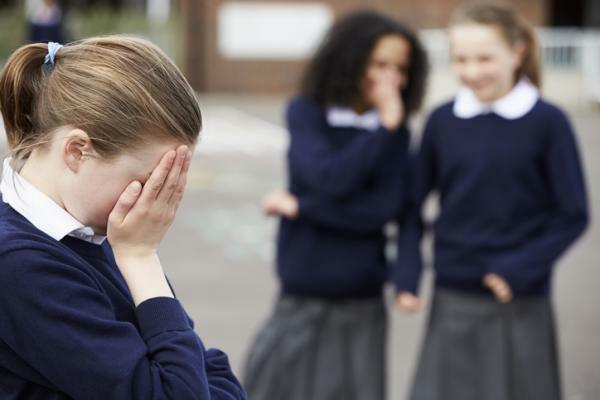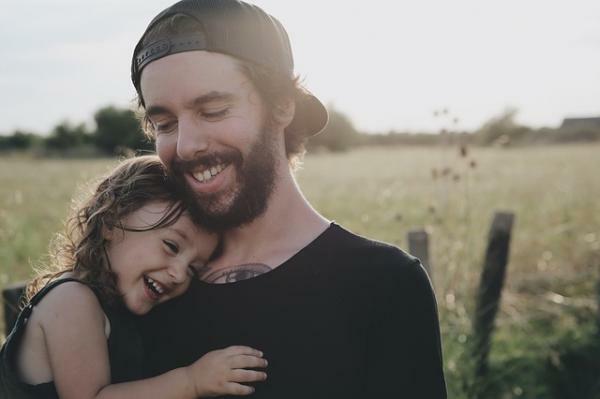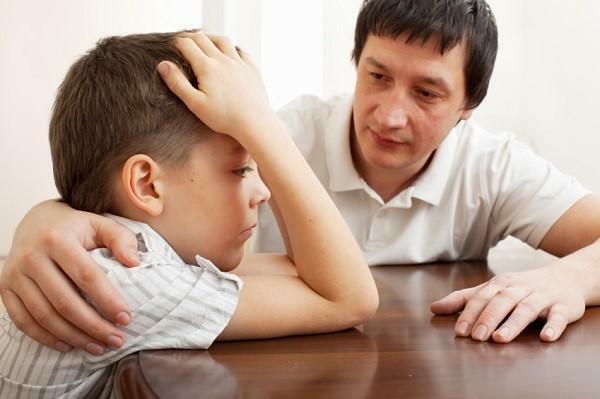
In Spain bullying is a latent problem, there are thousands of cases and few are documented due to poor performance, lack of information or inadequate training. It is a problem that damages human rights: education, health, adequate standard of living... and it affects minors and adolescents, of whom we must care to protect from any violence and discrimination. In this Psychology-Online article we will address the main questions surrounding this phenomenon: What is it? What are the main types of bullying and its consequences in the minor? How can we prevent it?
Index
- What is bullying?
- What are the types of bullying?
- Consequences of bullying
- How to prevent bullying?
What is bullying?
Before addressing the definition of bullying the distinction between violence and bullying, that is, between violence and harassment. When acts towards the minor occur "sometime", it is usually classified as mistreatment or violence while if occur repeatedly, with some frequency, we would talk about bullying or bullying.
The most widely used definition is that of the author Dan Olweus, who was the first to address the issue: "Bullying is a conduct of physical and / or psychological persecution carried out by one student against another, whom he chooses as the victim of repeated attacks. " The continuity of these attacks is key to defining and understanding the suffering and consequences of harassment school in the victim that we will see later and who feels completely defenseless and incapable of solving what it happens.
To better understand the concept, it is also worth mentioning the actors involved in bullying:
- Victims: there are different types, according to Olweus: “The typical ones, among which are the most anxious and insecure students who tend to be cautious, sensitive and calm; possess low self-esteem, have a negative opinion of themselves and their situation; and they are often viewed as failures feeling stupid and ashamed. These types of victims have been called passive or submissive and will not respond to attack or insult. Another type of victim is provocateurs characterized by a combination of anxiety and aggressive reaction patterns. These students often have trouble concentrating and behave in ways that cause irritation and tension around them. Some of them may be hyperactive. "
- Bullies or stalkers: There are also different types, the typical ones are usually those that are characterized by their bellicosity and impulsiveness as well as a need for dominance towards others, they are often insecure.
- Viewers: all those colleagues who do not participate in intimidation and aggression directly and who generally do not take the initiative but passively support the aggressor.
What are the types of bullying?
There are different types of bullying According to the perspectives and studies of different authors, in this article we will mention four to provide more comprehensive information on the subject:
- Physical harassment
- Psychological, relational or social harassment
- Harassment by teachers of students
- The cyberbullying or cyberbullying
1. Physical harassment
Direct aggressive behavior towards the person or their belongings: assaulting, pushing, material damage, stealing money, breaking clothing, biting, spitting ...
2. Psychological, relational or social harassment
Acts that make the individual a victim or / and produce isolation of the social group damaging the interpersonal relationships of the person, ignoring, humiliating, devaluing, not letting him participate in group activities... It can be done both directly by the aggressor and indirectly when he makes the spectators who carry it out. The objective of all this is to reduce the self-esteem of the victim, promoting the feeling of insecurity and fear, which is why verbal behaviors such as insults, threats ...
3. Harassment by teachers of students
According to the author Cabezas, there is a type of harassment referring to teachers, those authority figures who often engage in behaviors related to bullying and go through simply an exercise of their power given their position. The author refers that some teachers abuse for various reasons their situation of authority "targeting" students in a visible way, either through disapprovals, punishments, lies...
4. The cyberbullying or cyberbullying
One of the new identified forms of bullying is cyberbullying, defined as the use of some technologies of the communication and information through which the victim of the victim is deliberately humiliated or / and harmed in a hostile way bullying. Insults and threats are transferred to the internet the identity of the victim is often made public on social networks or mobile phones are used to record some insults or attacks and spread them. Here you can see the causes, consequences and types of cyberbullying.
Consequences of bullying.
The victim of bullying can suffer a wide variety of symptoms and consequences derived from the assault. Generally, the problems fall within the anxiety disorders: school or social phobia, panic attacks, appetite and sleep disorders that can end up leading to post-traumatic stress disorder. Sensation of helplessness, low self-esteem, distrust in the others, social withdrawal and depressive pictures that in the worst of cases could lead to suicide.
Somatic diseases are also common as well as poor school performance, changes in attitude, habits and character, feelings of guilt, revenge and stigmatization, threatening or attacking other children and more violent attitudes towards everyone. Also included are those physical injuries that in some cases may appear to have been committed by the aggressor.
How to prevent bullying?
Bullying should be treated as a serious global problem where, in addition, it is necessary to understand that all and all the participants have problems to solve. First of all, it is imperative train parents so that they educate their children with affection and limits as well as spend time with their children, be concerned and interested in their life. Make them learn that respect is necessary as well as communication and avoid violence at all costs. Infants should grow up having good self-esteem and knowing that no one other than him should be discriminated against. In the following article you will find How to improve social skills in boys and girls.
In many cases it happens that the situation is intervened late, leaving damage difficult to repair in the victim. This should be avoided at all costs, both by teachers and colleagues, families and professionals. You have to stop thinking that many behaviors are "boyish things" or that "this has always happened" and try not to minimize or maximize things, but see them from a balanced and rigorous perspective to prevent situation or intervene in time.
There is a need for a holistic approach that considers various areas and leads to improving interpersonal and community relationships as well as the detection of early risk factors. Many times in schools they limit themselves to labeling children as aggressive early on without putting attention to the causes that underlie these behaviors, you have to act and find out what happens to the child in order to help you. In general, the joint collaboration of parents, teachers and therapists is important for these situations and for their prevention. In this article you can read How to work on emotions in boys and girls.
On the other hand, in terms of policies, the latest Amnesty International report stresses that: "In recent years, the central and regional authorities have adopted legislative and administrative measures in relation to bullying, many of which have been received with satisfaction by educators. However, not all have been implemented, the mechanisms for reporting and monitoring are insufficient and, in practice, existing protocols do not adequately address all forms of harassment school"
In March 2017, after consulting with the autonomous communities and the educational community, the Spanish government presented the Strategic Plan for School Coexistence. This, however, includes some measures that have not yet been implemented - such as a training plan for teachers on the subject, for example - and that it is important to carry out. In this last year, 2019, the helpline for bullying situations received 12,799 calls, of which 5,557 were identified as possible cases of harassment. The figure has dropped from previous years, but there is still a lot of work to be done, especially considering that not all cases are detected.
This article is merely informative, in Psychology-Online we do not have the power to make a diagnosis or recommend a treatment. We invite you to go to a psychologist to treat your particular case.
If you want to read more articles similar to Types of bullying and its consequences, we recommend that you enter our category of Socialization problems.
Bibliography
- International Amnesty. (2019). Doing your sight... fat!: School bullying in Spain, a human rights issue. Recovered from: https://www.observatoriodelainfancia.es/ficherosoia/documentos/5836_d_Informe-Amnistia_Acoso-Escolar-2019.pdf
- Armero, P. & Bernardino, B. & Bonet, C. (2011). School bullying. Journal of Primary Care Pediatrics, XIII(52), 661-70.
- Castillo, L. (2011). School bullying. From the causes, origin and manifestations to the question about the meaning given to it by the actors. Magis. International Journal of Research in Education, 4(8), 415-428.
- Collell, J. & Escudé, C. (2006). School bullying: a psychopathological approach. Yearbook of Clinical and Health Psychology(2), 9-14.
- Enriquez, M.F. & Garzón, F. (2015). School bullying. Knowledge, science and freedom, 10(1), 219-233.


